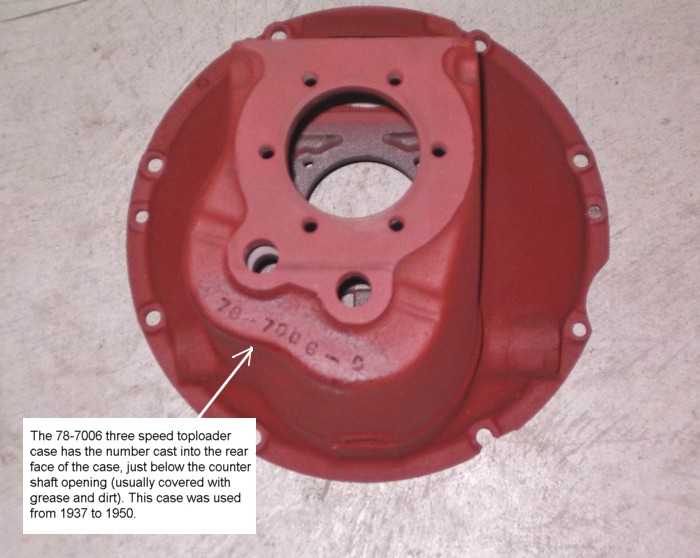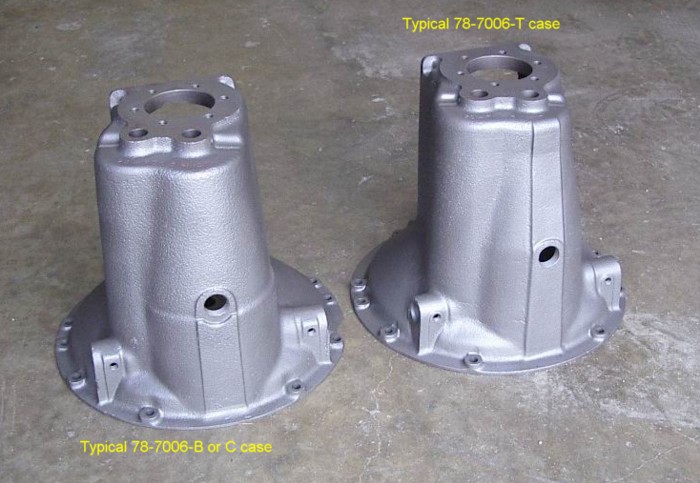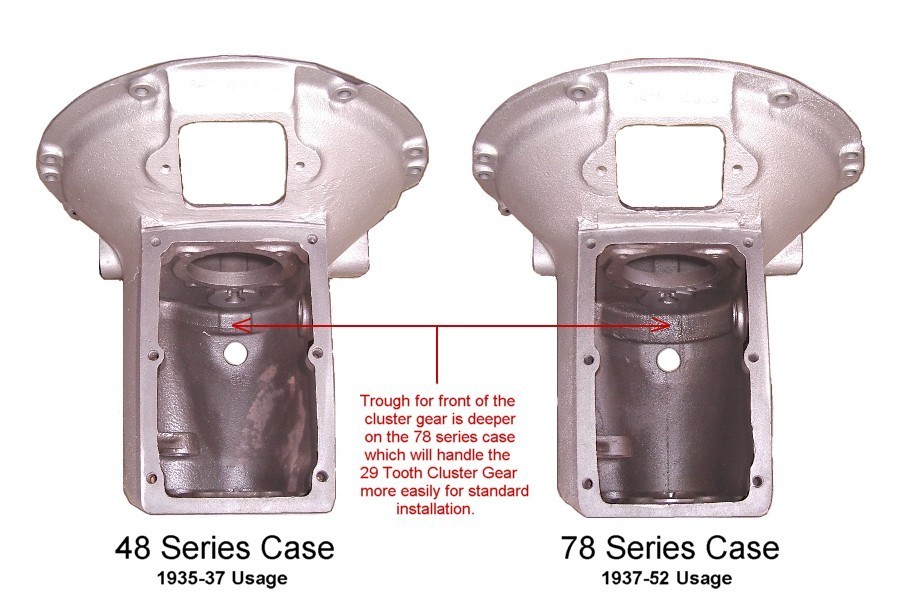|
Ford Top Loader Three Speed Transmission |
||||
 |
||||
|
Home Parts Drawings Web Links Tune-Up & Service Serial Numbers Engine ID Trans Identification Model ID Terms of Sale Contact Us Our Online Store Our Catalog |
Ford used a similar transmission case from 1932 to 1939 on the passenger cars, and up through 1952 on the light pickup trucks. The early castings were marked 18-7006 (1932-34) and 48-7006 (1935-36). In 1937 Ford introduced the 78-7006 casting. All interchange with previous years, but the 78-7006 case had a slightly enlarged (deeper) bell section to allow for the larger clutch and pressure plates. Some of the early 1937 cases were marked as 78-7006 but had the depth of the earlier 48-7006 cases. The 18-7006 cases are limited to use with the 9" diameter clutch. The 48-7006 and the 78-7006 cases will also handle the 9" through 11" clutches. The 78 series cases were reputed to be sturdier than previous ones. The shifter housings will interchange on all three cases, as will the clutch release shaft. The Ford parts books will refer to the case by its assembly part number of 7005, which represents the bare case with the pressed-in bushings for the clutch release shaft. The picture below shows the 78 series case from the back, clearly showing the case part number in the casting. This case was bead blasted and primed, so the numbers are easy to see. They are recessed and part of the casting (not stamped in and not raised) so they are often covered with grease and dirt, and difficult to see on a used junkyard or swap meet transmission. In addition, the rear mount (also known as the rear bearing retainer) is bolted to the six-hole flat surface you see, and somewhat covers the "78" numbers even more. Another way to identify these transmission is to check the serial number which is stamped into the top front section of the bell housing portion. The number will begin with a stamped "star" like an asterisk, followed by a series of numbers, and finally another star. Use this link to break down the serial number by year. If the case has no number stamped into the VIN area, it may have been a replacement transmission, and no number ever assigned to it. Also, beginning around 1948 (on F series pickup trucks) Ford did not stamp a serial number into the transmission case anymore. This area on the gearbox case will have the same rough sand-cast surface as the rest of the case. |
|||
|
The transmission cases shown above are cleaned cast iron from used transmissions. The obvious difference is the longer reinforcing rib on the bottom of the case. I have not found the suffix letters (B or C or D or T) in the Ford parts books, but it would appear that the "T" case may have been brought out for the late 1940's (to 1952) light three speed transmissions. This case will interchange all the way back to 1932 Ford passenger cars and light trucks. The truck cases have been found with and without the full-length bottom rib.
The comparison picture above shows the early (48 series) case and the later (78 series) case. In nearly all respects, they are the same, except for the depth of the gearbox. The thumbnail picture below shows this, but the important area is trough at the front of the case. This is where the large end of the cluster gear is positioned. If you are using a 29 tooth cluster gear in a 48 series case, you will have trouble fitting the gear set in the case because the cluster gear will sit up too high and interfere with the installation of the main drive gear under normal installation procedures. You can still use the 29 tooth cluster gear in a 48 series case, but you must trim the synchro teeth on the main drive gear to allow it to be installed. With the 78 series case, all cluster gears can be fitted into place without any special procedure. Refer to our Custom Variation & Set Up page. |
||||



